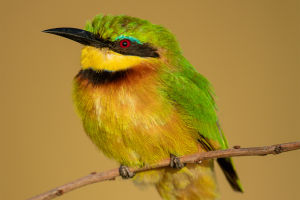Feline Origins Explored
Cats are one of the most popular pets in the world, known for their graceful appearance, independent nature, and mysterious behaviors, which have long captured human fascination.
However, the origin of cats is not as simple as it appears today. Their history spans thousands of years, intertwined with various cultures and social backgrounds.
This article will delve into the origins of cats and explore how they evolved from wild animals to beloved household companions.
The ancestors of cats can be traced back to around 9,000 years ago, during the Neolithic era. As humans began settling down and developing agriculture, the storage of grain attracted large numbers of rodents. These rodents not only posed a threat to farmers' crops but also provided a rich food source for wild animals.
Particularly, some wild felines, such as the African wildcat (Felis silvestris lybica), gradually began to appear around these agricultural areas. The African wildcat is smaller in size, with a solitary nature, and lived by hunting rodents, helping humans control pests.
During this process, the relationship between cats and humans gradually became closer. Unlike dogs, which were domesticated to live in groups, cats adapted to human environments as "voluntary partners." They did not require special training but simply survived and reproduced near human farms, gradually earning human acceptance. The independent nature of cats sets their relationship with humans apart from dogs, making it more of a mutually dependent cooperation.
Studies suggest that the domestication of cats was not a one-way process. Cats gradually adapted to living with humans through "natural selection." The most adaptable cats were able to enjoy food leftovers or prey caught by humans without much direct contact, gaining survival advantages.
Over time, the descendants of these cats became more reliant on humans, while some wildcats continued to lead independent lives. Unlike dogs, the domestication of cats was not the result of human intervention, but rather a self-evolution through environmental adaptation.
The domestication of cats did not only occur during the early stages of agricultural societies, but their distribution was also closely linked to human migration. As human civilization expanded, cats were gradually introduced to different parts of the world. In ancient Egypt, cats were given a sacred status.
Egyptians not only viewed cats as protectors of the home but also associated them with the goddess Bastet, who represented cats, home, and fertility. This sacred status made cats an integral part of ancient Egyptian society, where their trade and care were even strictly regulated.
With the spread of Egyptian culture, cats gradually made their way into Europe, Asia, and other regions. During ancient Greece and Rome, although cats were not deified as in Egypt, they still held a place in households. Their ability to control mice made them important companions for sailors and merchants, especially in port cities, where they played a vital role in controlling rodent infestations in warehouses and on ships.
The independence, adaptability, and low social demands of cats allowed them to integrate more easily into human society.
They can coexist harmoniously with humans while maintaining their independence. This characteristic makes cats ideal companion animals, not only because of their beauty and elegance but also because their behavior meets modern human expectations for pets—providing companionship without being overly dependent.
In conclusion, the origin and history of cats are closely tied to human civilization. Their independence, elegance, and adaptability have made them not just animals, but cultural symbols, representing the wisdom of human coexistence with nature. As time goes on, the story of cats continues, becoming an indispensable part of global culture.


